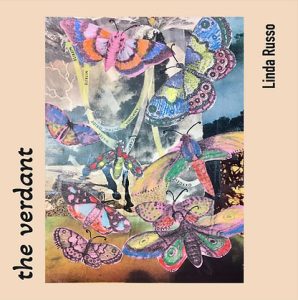The Southeast Review – 2012
Volume 30 Number 1
2012
Biannual
Mary Florio
I grew up on the classics and consequently nursed a bias that minimalism restrained the imagination. Then, I read the most recent Southeast Review where minimalism is done so well that the volume became, to me, a classic itself. I was especially floored when I read Maria Kuznetsova’s short story “Before and After.” The language was certainly careful and restrained, but she mastered the best parts of modern craft while telling at least three mesmerizing stories about innocence, growing up, and the spectrum of emotions that, collectively, we call love. While there is only one narrator, the possibilities of interpretation and meaning explode like a rash of fireflies.
I grew up on the classics and consequently nursed a bias that minimalism restrained the imagination. Then, I read the most recent Southeast Review where minimalism is done so well that the volume became, to me, a classic itself. I was especially floored when I read Maria Kuznetsova’s short story “Before and After.” The language was certainly careful and restrained, but she mastered the best parts of modern craft while telling at least three mesmerizing stories about innocence, growing up, and the spectrum of emotions that, collectively, we call love. While there is only one narrator, the possibilities of interpretation and meaning explode like a rash of fireflies.
Kuznetsova is joined in this issue with a cohort of champions. Ashley Wurzbacher’s short story, “What You See When You Look Close Enough,” demonstrates an effective execution of voice and point-of-view with the utmost grace. The narrator weaves a second-person close-up in between the third-person narration in a surreal wave as a family makes a trip to New Jersey to see a phenomenon appearance of the Virgin Mary in a bleach stain. The alternating narrators foster this strange holy haze so that you, the reader (and maybe “you” the second-person young boy), are likewise suspended in disbelief. Here is an example of the two speakers intertwined:
It’s amazing how many things can be in your mind at one time, especially when you’re drowning. Under the water, in the dark, Joey knew everything. He knew why he threw the rock at Cody . . . He was sorry, sorry, sorry.
The feelings in this story surge and recede like the world of water the characters occupy—and it is this kind of insecure symmetry that justifies the language’s ebb and tide with speaker and the closeness that the author permits the reader to the feelings of Joey. Sometimes I am not sure that there is not another character in this story, an unnamed observer—a spirit that infuses the boys’ games of life and death at a Lord of the Flies kind of dance, kind of microcosmic climax.
Author Linda Yuknavitch shared many compelling insights, in her interview by Caleb Powell, which web back with a silver thread to the subject matter in the narrative nonfiction first place essay by Jacob M. Appel (“Livery”). Appel explores a host of medical ethics issues in the inverse of a PubMed entry; the story of a forgetful nonagenarian asking for a “suicide pill” describes all of the formulaic functions to keep him safe, while Appel, a physician, extracts a compelling message from the situation that transcends the idiosyncrasies of geriatric medicine. For the minute that you are immersed in the madcap approach to springing the man—and the tone provides this moment of idyllic levity—Appel strips the popular terror of declining cognitive abilities with age straight off the list; salve itself.
Appel keeps good company in the nonfiction section; finalists Carol J. Clouse and Barbara W. Sands bravely capture exquisite worlds while managing to entertain and inspire—and to teach. Clouse’s essay, “The Luck We Spent,” exhibits clarity and vision about a deeply personal struggle—conception in the context of age and extraordinary desire.
As for the poetry, there is so much to note, recite, keep. They are not always “accessible” per se; you could not exactly submit all of them to a court of law or a psychology text analyzer for any kind of clear admission, but the writers achieve an essential feeling—and it emerges gracefully from the page. Keverlee Burchett starts the journal with a poem titled “EF5” that initiates us into the volume so simply and sweetly: “Woke up with almonds / or honey at the back of the throat, / inconsolable.” Notable also is Clay Matthews’s poem, “Syllables, Child, Are Made of Air,” as it creates an arresting subtext for the Values.com Motivational Posters and elevates their message to one that is both personal and elemental.
This issue also salutes what the magazine titles, “World’s Best Short-Short Story Contest 2011, Judged by Robert Olen Butler.” Flash fiction has been on the rise for years now, and these seven finalists and winner Kim Henderson do a terrific job of creating compelling story lines in a fraction of the space.
I especially liked Niloo Sarabi’s “Abba” and Henderson’s “A Brookside Park Sunburn”; each does a masterful job of connecting a very large world with a personal incantation. I wonder if flash fiction works best when some of the elements of narration or features are embedded. I brought with me a strong frame of reference for Sarabi’s piece, so her devotion to elements other than those I knew allowed me a richer experience, a reduction of variables that allowed me to focus on characters and elements I immediately cared about.
The magazine supplemented the text with cutting-edge photographs of an art installation and an engaging comic strip. Fans of electronic readers will note that the writing, art and feel of this magazine is worth keeping for a long time in its print form, right next to volumes of Dostoevsky, Faulkner and yes, someone as recent as Rushdie, sparse as Carver.
[www.southeastreview.org]




